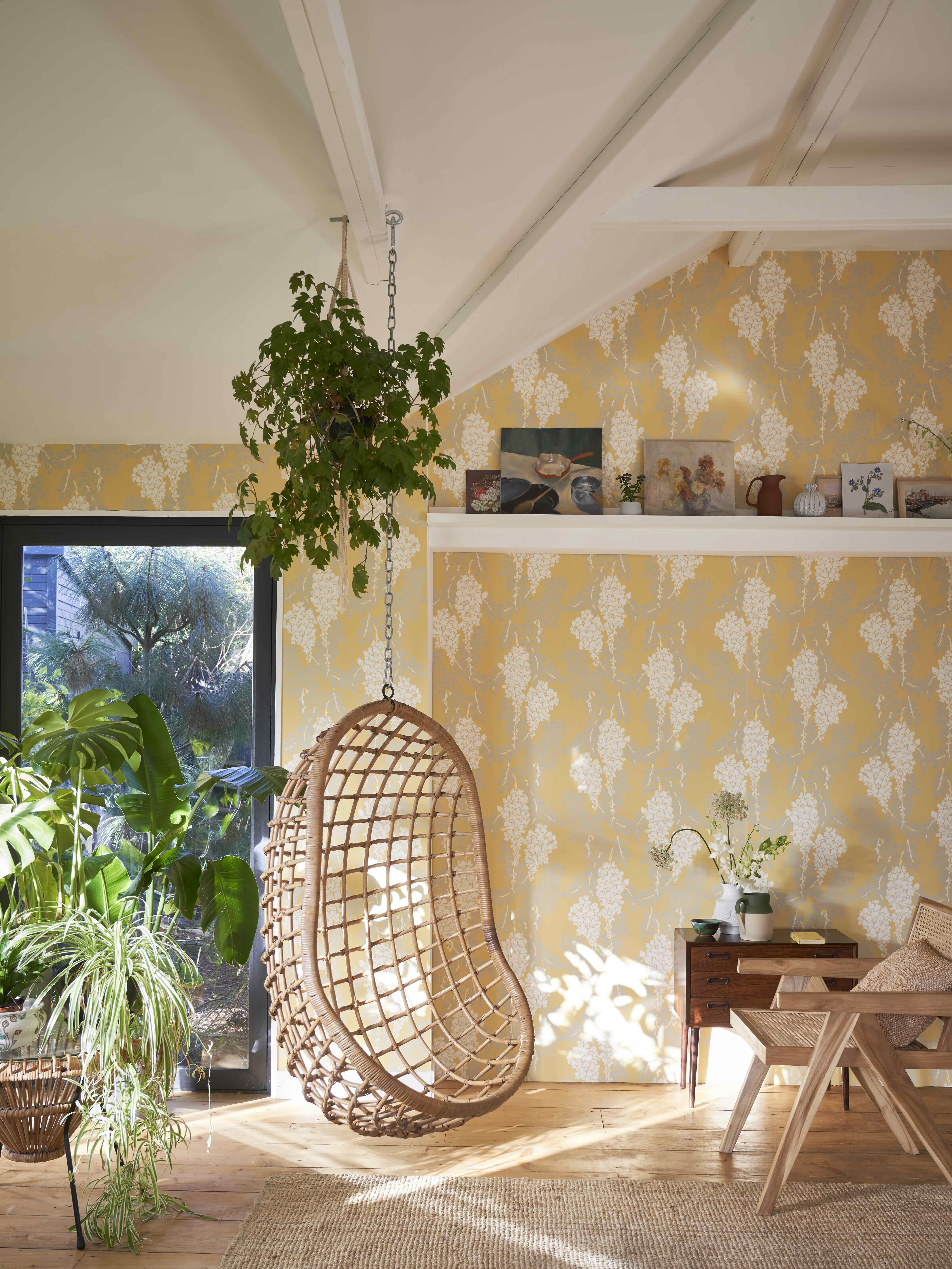Every Farrow & Ball Wallcovering Is Handcrafted With the Brands Iconic Paint
When you think of British company Farrow & Ball, the first thing that comes to mind is probably its unique, exceedingly rich paint colors. But savvy design prosand now you, tooare wise to the brand's lesser-known but no-less-luxurious small-batch, handcrafted wallpapersa guaranteed way to make a space feel special.Unlike many mass-produced papers that are digitally printed using ink, Farrow & Ball's are created with the brand's actual paintswhich are made in a building that is literally next door to the wallpaper factoryso they deliver that same renowned depth of color. And each roll is unique, due to the company's commitment to traditional artisanal techniques that result in slight variations in tone and texture. "People are at the heart of every stage of our process," says Farrow & Ball creative director Charlotte Cosby. "Our experts cut the foam pads used for our striped designs by hand, line up the paper for multi-layered patterns, and even wrap the finished rolls in our brown paper packaging."Robin KitchinShallot No.CB3They start the process by mixing colored pigment into a white base paint. Each pigment is added by hand or a dispenser, depending on how much is needed, and arriving at the desired end color requires precise calibration and multiple quality-control checks, given that the shades can look very different in the vat. (The seemingly bright red pigment being stirred above is Shallot, from the Carte Blanche collectionwhich, by the time it's ready to be applied to paper, will be "a cheerful pink," according to the company.)Courtesy of Farrow & BallTented Stripe 1351Once the paints have been prepared, Farrow & Ball's craftspeople employ labor-intensive techniques like open-trough and roller-block printing to make the wall coverings. In the former, shown above, a foam pad is cut by hand to create the patternin this case, stripes. Paint flows through the pad, and the paper is dragged along it, applying a continuous flow of color. (The neutral background color in this Tented Stripe pattern has already been applied and allowed to dry.)Robin KitchinAuguste 6504James MerrellAuguste 6504In the latter process, a foam roller applies paint to a roller block into which the pattern has been carved. The whimsical floral above, shown both being printed and cheering up a bedroom wall, is Auguste, one of five patterns in the company's latest wallpaper collection, Purnon Papers. The green leaves (colored with Farrow & Ball's Bancha paint) have previously been applied using a different roller block, and now the blooms, in India Yellow, are being added in a second pass through the equipment. Once the paints have dried, a Farrow & Ball expert checks the wallpaper to make sure the two colored elements of the design are lined up correctly.James MerrellAdelaide 6303The Purnon Papers patterns are all inspired by designs found in the 18th-century Chteau de Purnon, in France's Loire Valley. Above is Adelade, named for one of the daughters of the marquis who built the residence and modeled on a pattern found in her dressing room. (The aforementioned yellow-and-green Auguste floral takes the name of the eldest son.) James MerrellPurnon 6204Other entries in the collection were similarly discovered in the centuries-old chteaunot an atypical source of inspiration for Farrow & Ball's creative team. Barac was inspired by a fading fragment unearthed in the home's attic. Purnon (shown above), a toile-like pattern that incorporates a heron, was found on a folding screen that had likely been used as a room divider. The geometric Achard was inauspiciously discovered inside a linen cabinet, then grandly given the family's surname."One of the main considerations we make when adding patterns to our wallpaper collection is whether the design complements our techniques," Cosby says. "Naturally, a lot of our more traditional designs are well suited to the traditional methods we use." This also applies to many designs beyond the Purnon Papers; Wisteria, for instance (Wisteria 2212 is pictured at top), is drawn from 19th-century woven fabrics.Regardless of what century inspired the brand's various wallpaper patterns (53 are currently offered), all are made with very 21st-century, planet-friendly practices. The company sources its raw materials for both paint and wallpaper from ethical suppliers and powers its factory with renewable energy. In addition, many of the designs are made to order, and Farrow & Ball's paint is made in small batches, Cosby points out. Mostly, though, the company's focus is on creating both stunning designs and devoted customers. "We don't follow trends," the designer says. "We want to empower people to understand color. It's all about helping people create a home they love for years to come."


